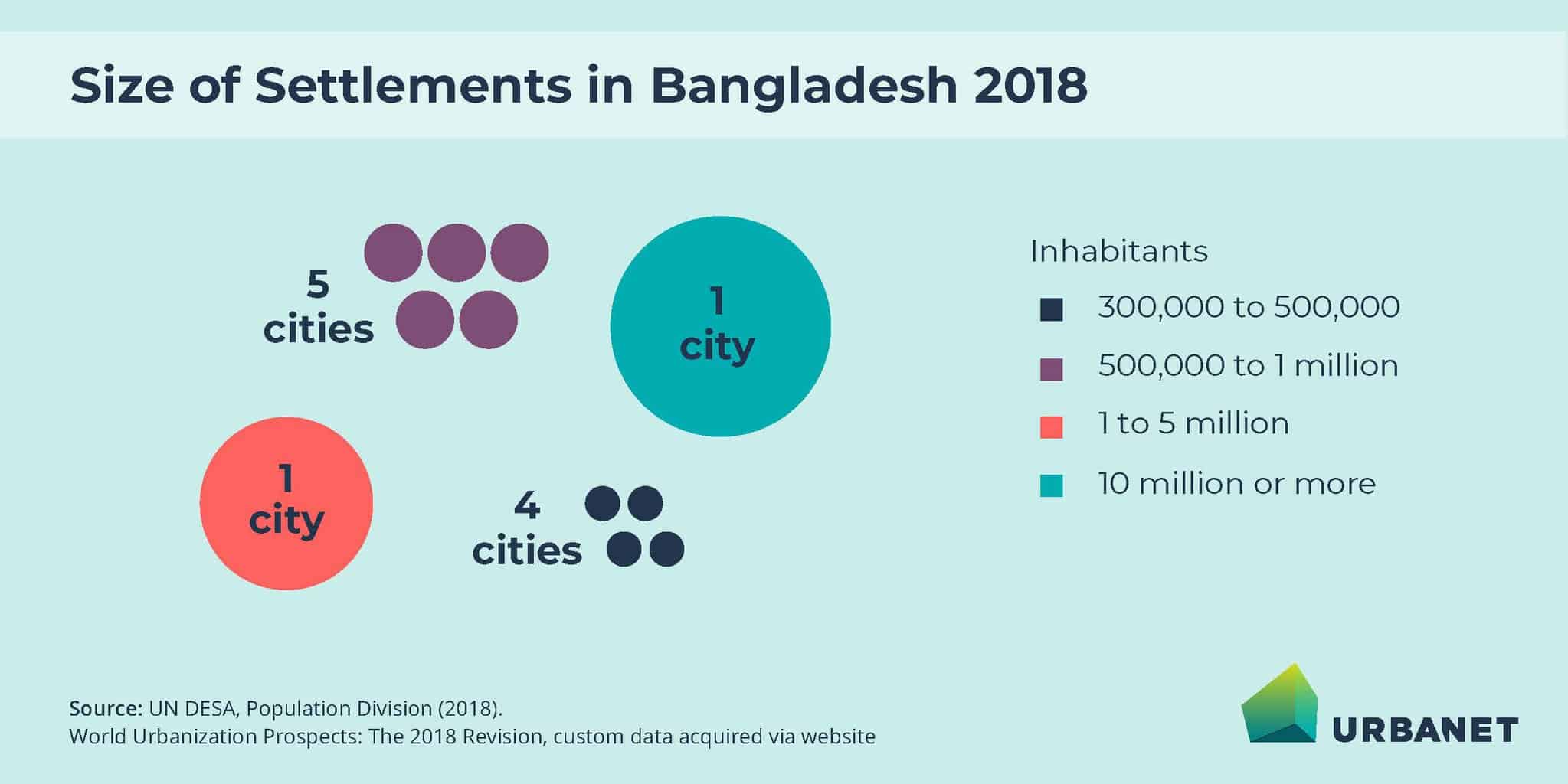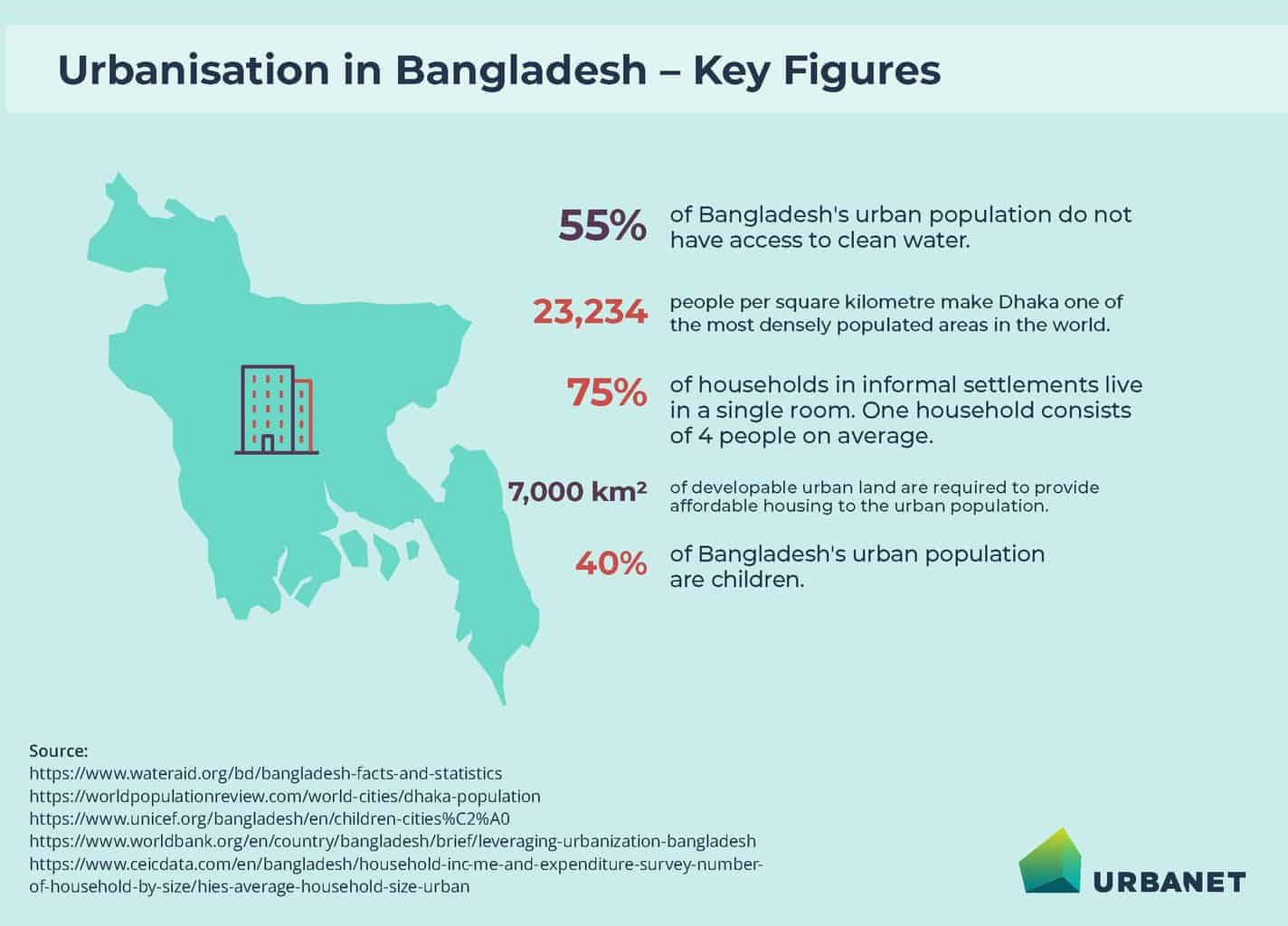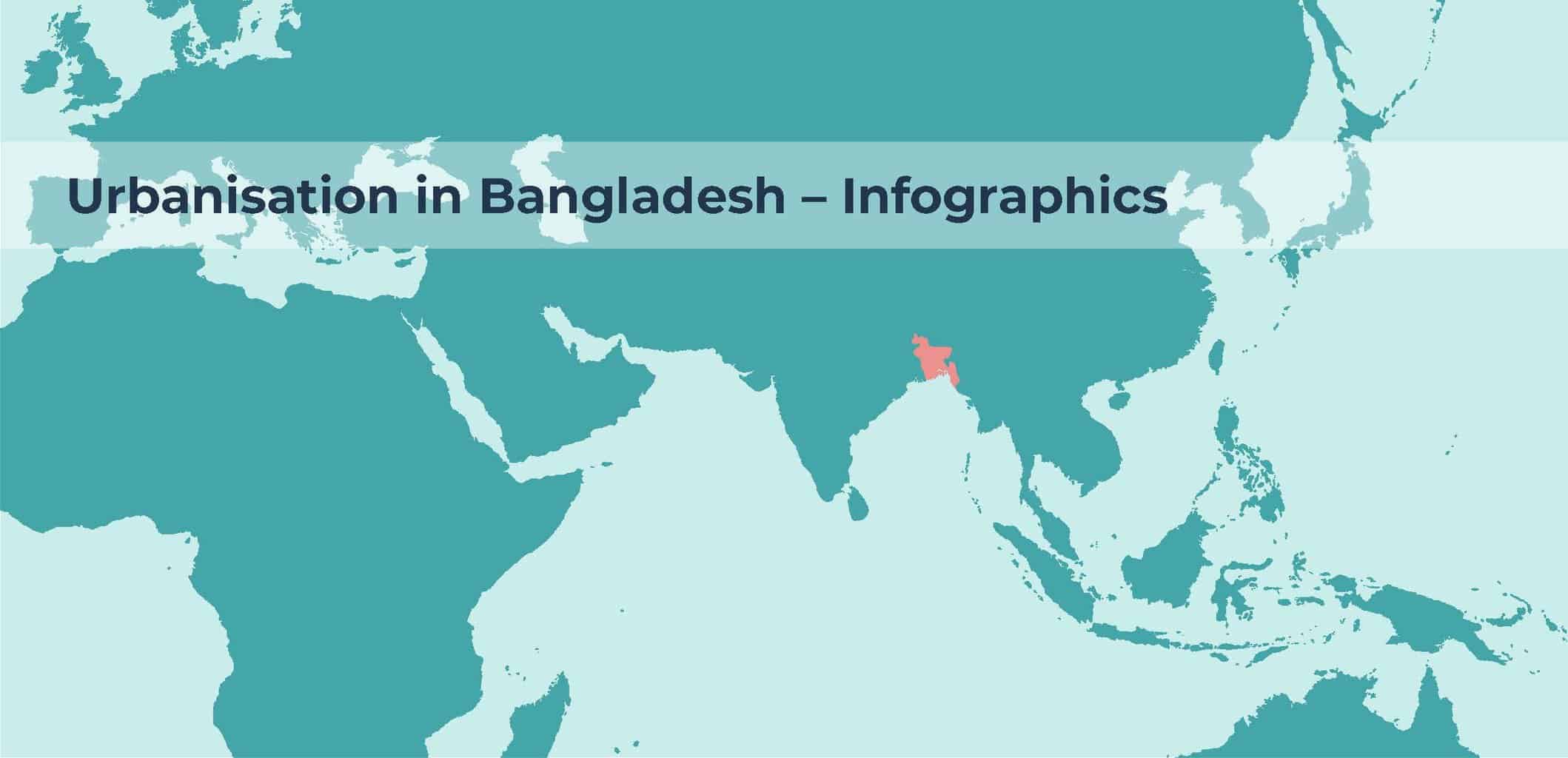Infographics: Urbanisation and Urban Development in Bangladesh
URBANET presents another country series, inviting readers to learn about urbanisation and urban development in Bangladesh! We kick off our focus weeks with a set of infographics. We offer you facts and figures from this young nation, where rapid urbansiation has been presenting urban planners and policymakers with various challenges and potentials alike.
Urban and Rural Population
Both Bangladesh’s urban and rural population were increasing constantly until the mid-2000s, when its rural population started to stagnate. Yet, the country’s rural population still outnumbers the urban one. This is projected to change in the near future: the urban population is expected to continue its steep increase, while the rural one will decline. The year 2037 is projected to be the intersection and turning point, when urban Bangladeshis will outnumber their rural co-citizens for the first time.

Urbanisation in Bangladesh – Urban and Rural Population | Bangladesh Infographics © GIZ
Size of Settlements
Bangladesh has eleven metropolitan areas; among these are nine cities with a population of less than one million. Next to them in size and with significantly larger populations stand Chittagog, which in 2018 had a population of 4.8 million and, the largest urban settlement in the country by far, the capital Dhaka with 19.6 million inhabitants.

Urbanisation in Bangladesh – Size of Settlements | Bangladesh Infographics © GIZ
The 6 Largest Urban Agglomerations in Bangladesh
All of Bangladesh’s six largest cities are projected to have grown in population by 2030: population increase will likely lead to largest numbers in Chittagog, projected to grow from 4.5 to 6.4 million, and in Dhaka, which is expected to be home to a stunning 28 million people by 2030. However, in some of Bangladesh’s smaller cities a significant proportional population increase is also expected, for example with Bogra projected to have doubled its population and Sylhet being a close second.

Urbanisation in Bangladesh – Largest Cities in Bangladesh | Indonesia Bangladesh © GIZ
Urbanisation in Bangladesh – Key Figures
Clean water supply is a major challenge for Bangladesh’s urban dwellers, and 55 per cent of urban residents do not have access to it. Megacity and capital Dhaka is one of the most densely populated areas in the world, where on average more than 23,000 people live on each square kilometer. This implies that individual living space is limited, especially in informal settlements, where three quarters of households live in one single room. To provide the country’s residents with adequate and affordable housing, 7,000 square kilometres of land would be required. Not only is Bangladesh a young nation – it gained independence from Pakistan in 1971 – , it also has a young population, and of its urban population 40 per cent are children.

Urbanisation in Bangaldesh – Key Figures | Bangladesh Infographics © GIZ
